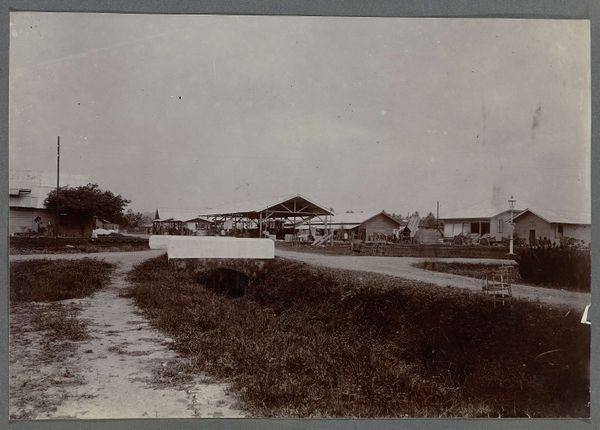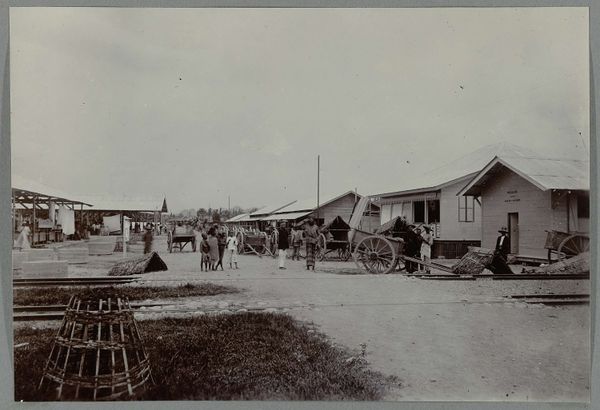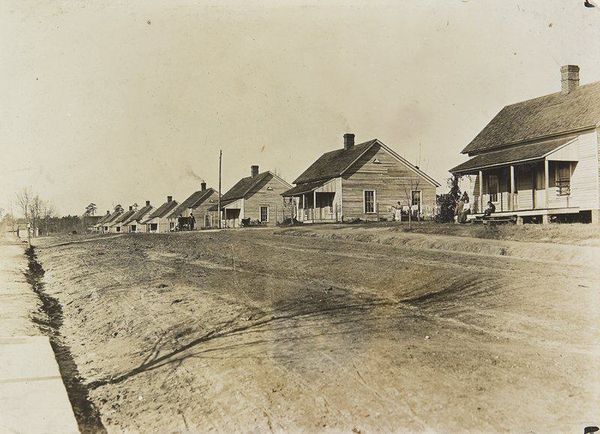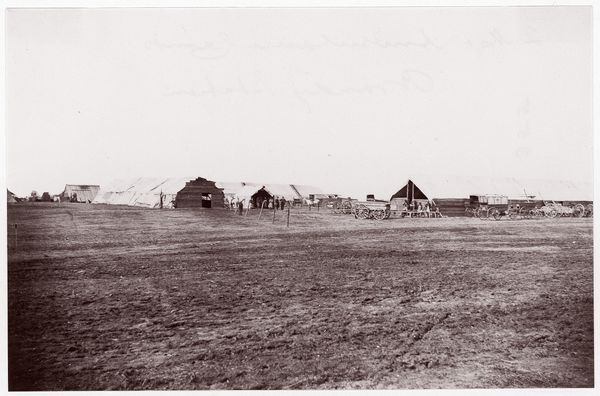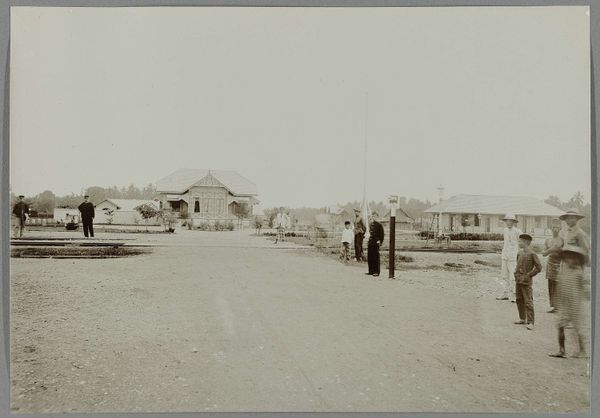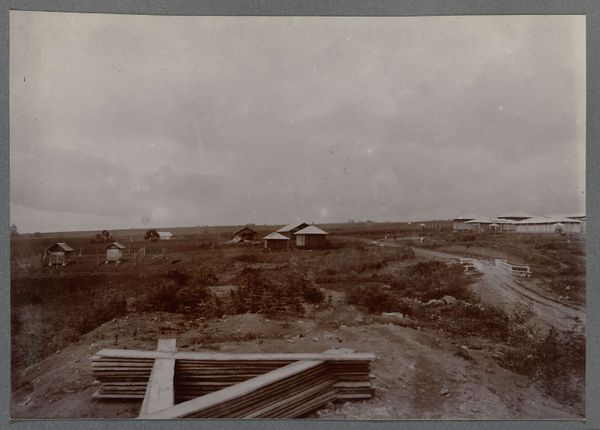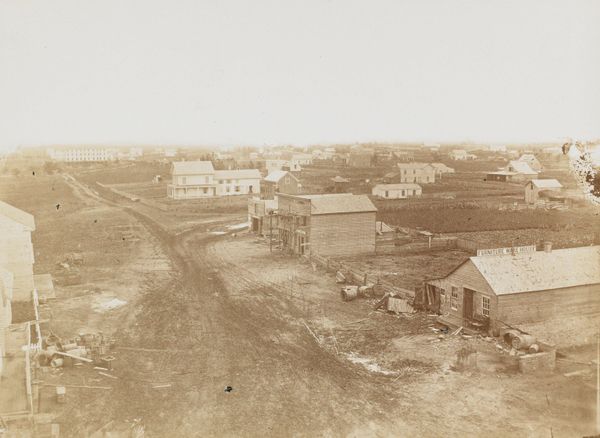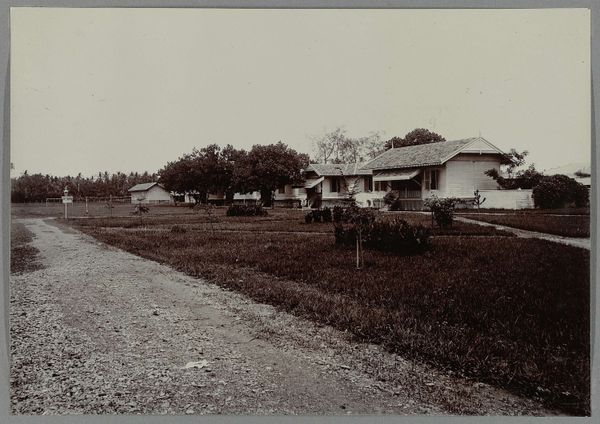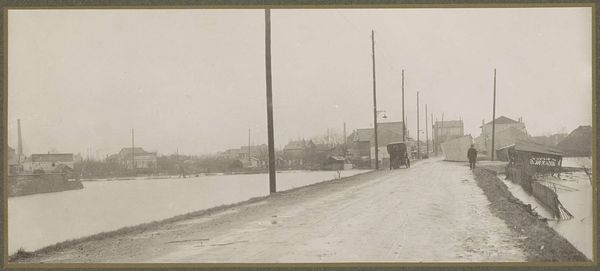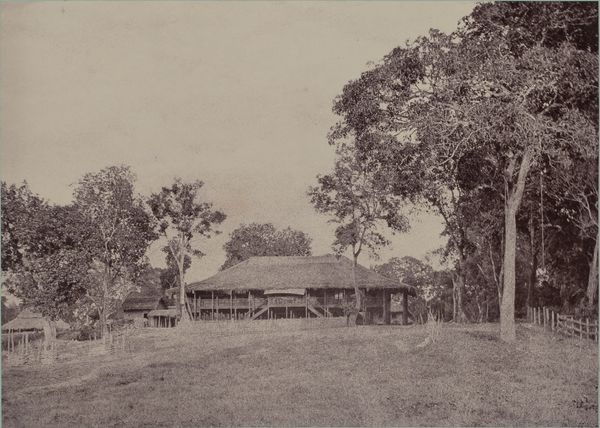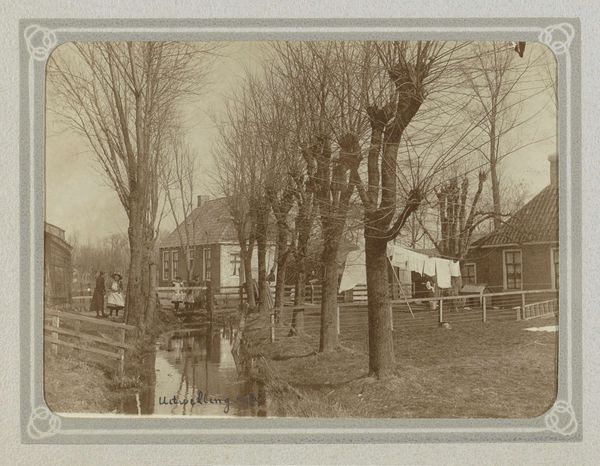
photography
#
landscape
#
photography
#
cityscape
#
realism
Dimensions: height 138 mm, width 200 mm
Copyright: Rijks Museum: Open Domain
Editor: So, this photograph is entitled "Controleurswoning in een dorp," dating roughly from 1903 to 1913. It's quite a striking scene; a dusty town square perhaps. What aspects of it jump out at you? Curator: Immediately, the means of its production. As a photograph from this period, it shows us more than just a scene. It highlights the technology, the access to that technology, and the socio-economic power dynamics implicit in creating such an image in a presumably colonized location. What type of labor was necessary for this type of urban planning, and who benefitted? Editor: That's a good point. The very act of documentation becomes a statement. Are you suggesting we should focus on the social context surrounding the picture more than the picture itself? Curator: Precisely. Consider the 'village'. What resources went into planning it? Where did those building materials come from? The layout itself seems quite deliberate. What does that spatial planning say about the relationships between the people living and working here and the land around it? Editor: So you're reading the photograph less as a straightforward depiction of a village, and more as a document revealing something about the means of resource distribution and social hierarchies? Curator: Exactly! The houses aren't just buildings, they represent accumulated capital, resource exploitation, and possibly even forced labor. Think of the roads, too. The dirt, the sheer act of creating a pathway: whose movement did this enable, and at what cost? The photographic materials themselves—glass plates, chemicals—these all speak to a global exchange of resources too. What raw materials are in photography? Where are the photographic chemicals sourced from? What type of industry is being cultivated or disrupted by making this picture? Editor: That gives me a lot to think about. I was initially drawn to the composition, but I see now how much more is embedded within the photograph. Thank you! Curator: Indeed. It’s about looking beyond the surface, and examining the networks of power that shape what we see, and the means by which what we see is created.
Comments
No comments
Be the first to comment and join the conversation on the ultimate creative platform.
